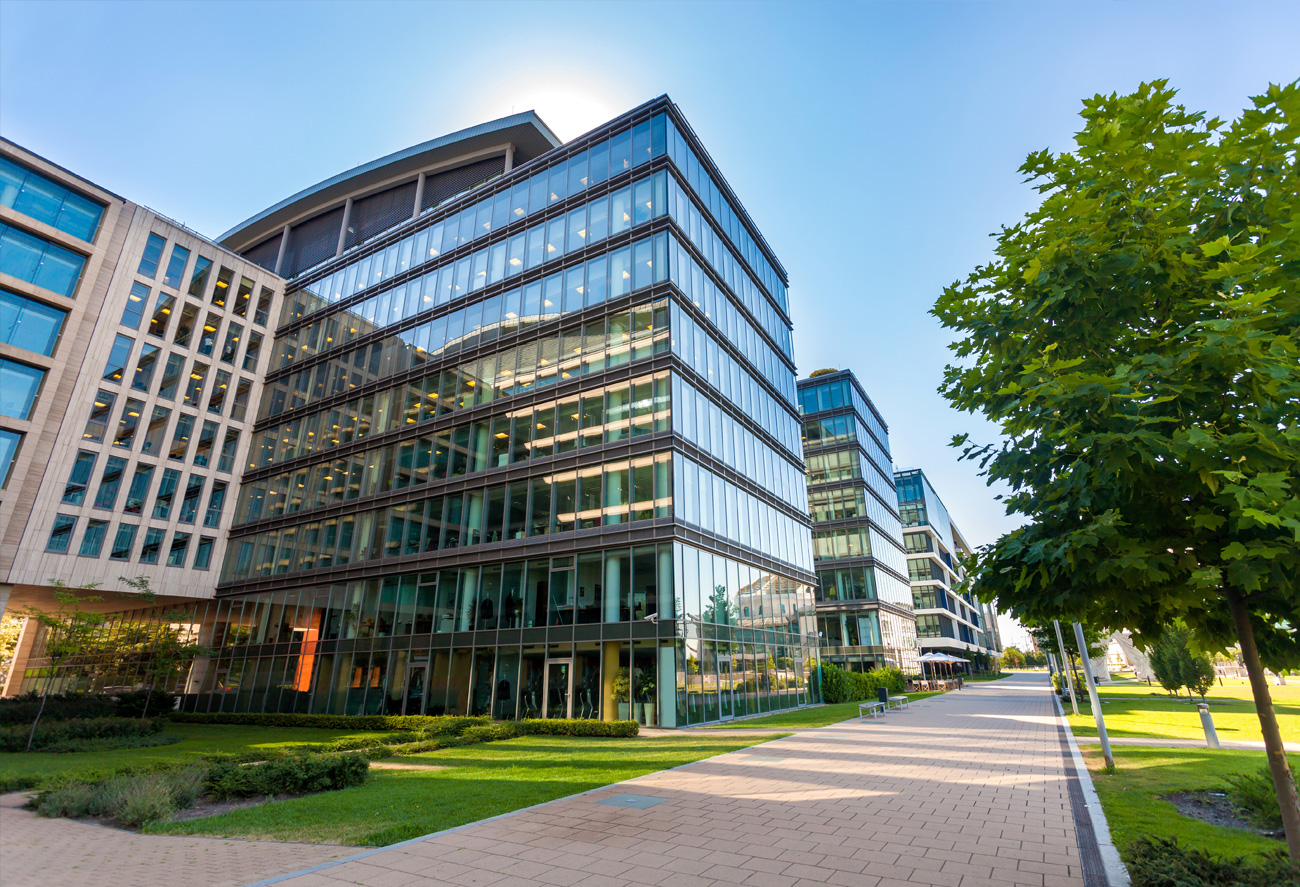
Office real estate finding its second wind in the post-Covid era
The fallout from the unforeseen pandemic outbreak has had a massive impact on office real estate causing a spectacular fall in investments. However, far from admitting defeat, the sector is instead looking to re-invent itself in line with today’s social and environmental values.
Investments in office real estate during the health crisis fell by a staggering 42%! A spectacular downturn which, along with the resulting explosion in remote working, has forced the office real estate market back to the drawing board. The challenges it faces are huge:
- to reorganise and optimise existing spaces in keeping with the motto “Less space, but better space!”, meaning less square footage but with an optimal configuration
- to redesign future offices around the notion of the “flex office” for example and the services required to improve Quality of Work Life (QWL)
- to transform office real estate projects into joint commercial and residential projects
Office real estate which champions mixed use and flexibility
As a result of the unprecedented and totally unforeseen crisis and in order to continue to attract tenants, owners have no choice but to become more flexible. Leases may therefore be shorter, designed for part-time occupation or even open to subletting.
To respond to this need to adapt, workspaces now incorporate modular equipment with partitions which can be easily moved around and furniture which can be adapted according to the number of people present.
Another new approach is for office real estate to be less concentrated in one single building. The aim now is for it to be integrated with housing, childcare facilities, and even restaurants and retail outlets.
Tomorrow’s offices are going green
The pandemic has also changed office users’ expectations. They are now much more concerned by air quality and its impact on health. They need to be reassured with systems which will manage ventilation flows in the most optimal and safest way.
Green spaces are also in high demand, especially by those living in towns and cities for whom the long periods of lockdown were particularly tough. Offices will therefore incorporate spaces for relaxation, as well as a number of new amenities such as food services, a concierge service or even a gym. The aim is to get workers to see office buildings in a whole new light by making them much more attractive.
Finally, tomorrow’s offices must reduce their environmental footprint. This starts with renovation work to bring buildings in line with current energy performance standards. Climate control engineering is essential for the future of office real estate. Updating all the heating installations (insulation, air-conditioning, ventilation), as well as the electrical installations is essential. Some will go even further by installing solar panels to produce their own energy. The ultimate goal being cost optimisation and a lower environmental footprint.
Adapted and more secure premises
Security and the ability to adapt to a new era is the last major point to be taken into account in the upgrading of office real estate. Buildings are being equipped with the latest technology such as charging points for electric vehicles, along with secure, hassle-free bike storage facilities so that users can leave their vehicle with complete peace of mind.
The buildings must also be fully secure and accessible only to people authorised to enter them. Telecom networks and IT systems need to be redesigned to integrate the latest high-performance technologies to guarantee the security of companies’ data.
To sum up, office real estate has been hit hard by the crisis and is now looking for its second wind. The end of lockdown has brought with it strong signs of recovery and the sector must now look to adapt to users’ new needs to continue its upward trend.

No Comments
Sorry, the comment form is closed at this time.